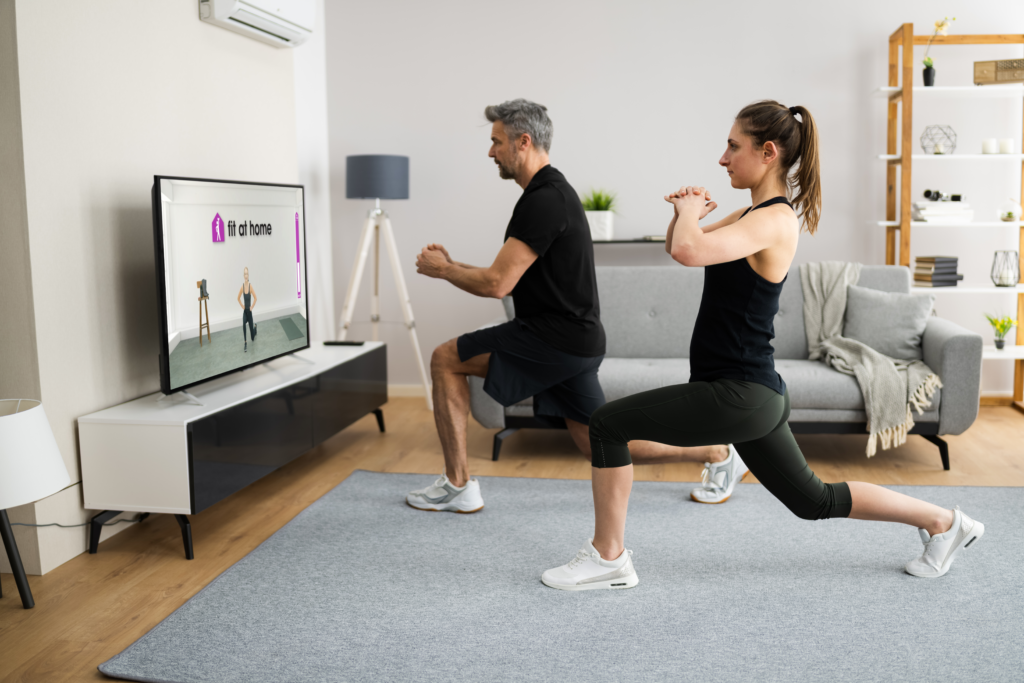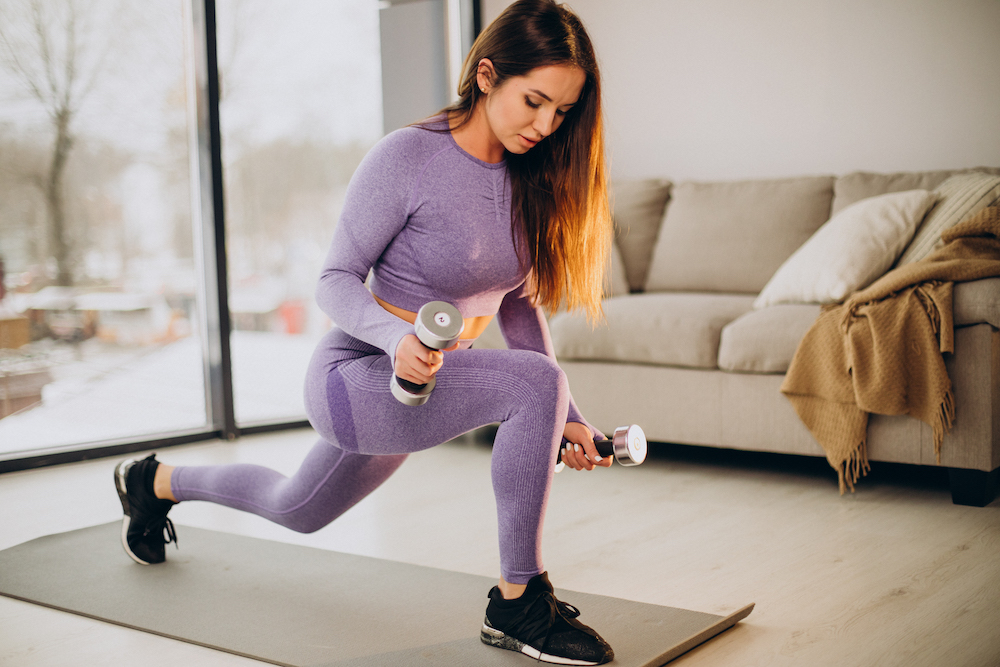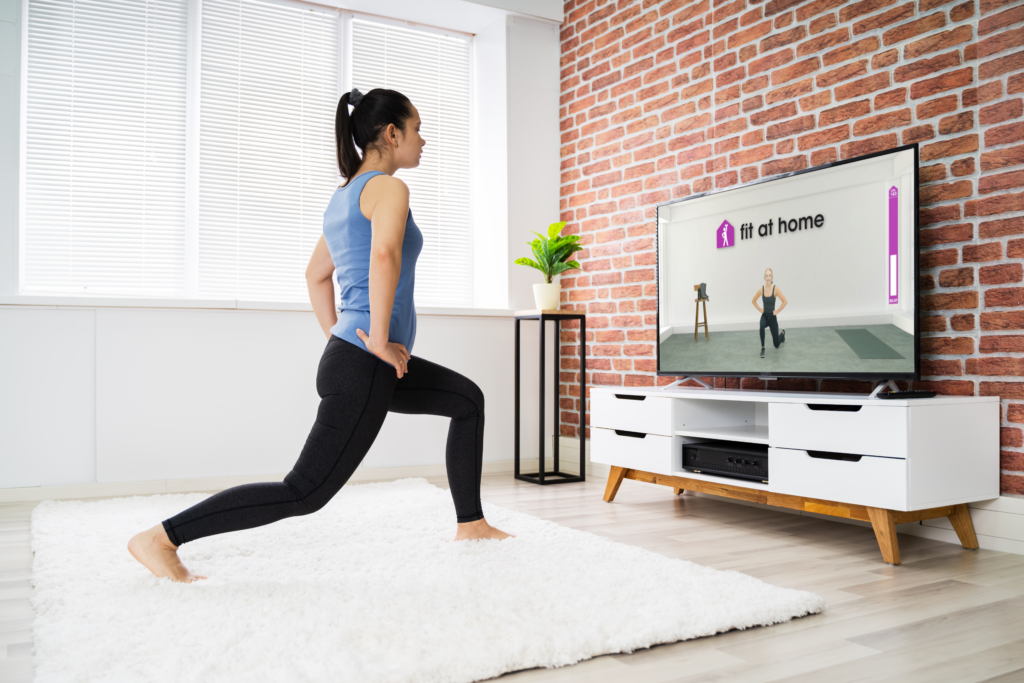
The lunge is a versatile and effective exercise that targets multiple muscle groups, making it a popular choice for fitness enthusiasts and athletes alike. Whether you’re a beginner or looking to improve your form, mastering the lunge can help you build lower body strength, improve balance, and enhance overall fitness. In this blog, we’ll provide you with a step-by-step guide on how to perform a lunge correctly to maximize its benefits and avoid common mistakes.
This is why you should do a lunge
Discover the undeniable benefits of incorporating lunges into your fitness routine. Lunges, a fundamental lower body exercise, offer a multitude of advantages that contribute to your overall strength, stability, and well-being. Here are some reasons why lunges are an excellent addition to your workout routine:
- Strengthens lower body muscles: Lunges target multiple muscle groups in the lower body, including the quadriceps, hamstrings, glutes, and calves. These muscles are essential for daily activities like walking, climbing stairs, and maintaining balance.
- Improves balance and stability: Lunges require maintaining balance and stability, especially during dynamic variations like walking lunges. This helps improve coordination and reduces the risk of falls in daily life.
- Functional exercise: Lunges mimic movements we perform in daily life, making them a functional exercise. They help improve your ability to move efficiently and safely in various situations.
- Builds leg muscle symmetry: Lunges work each leg independently, which can help address muscle imbalances between the left and right sides of your body.
- Core activation: To maintain proper form during lunges, you need to engage your core muscles, which helps strengthen your midsection.
- Flexibility and range of motion: Performing lunges helps improve hip and knee flexibility, enhancing your overall range of motion.
- Cardiovascular endurance (plyometric lunges): Plyometric lunges, with the jumping motion, add a cardiovascular component to the exercise, helping to improve heart health and increase calorie burn.
- Variety and progression: There are numerous lunge variations, which provide workout variety and allow you to challenge your muscles in different ways. As you get stronger, you can progress to more advanced variations or add weights for additional resistance.
- Time-efficient exercise: Lunges are a compound exercise, meaning they work multiple muscle groups simultaneously, making them efficient for building strength and saving time during your workouts.
- No equipment necessary: Basic lunges can be performed using just your body weight, making them accessible for most people, even if they don’t have access to gym equipment.
Remember, proper form is crucial when performing lunges to prevent injuries. Always warm up before doing lunges or any exercise, and if you have any pre-existing health conditions or concerns, it’s best to consult with a fitness professional or your healthcare provider before starting a new exercise program.
This is how to do a lunge
Performing a lunge is a great exercise for targeting your lower body, including your quadriceps, hamstrings, glutes, and calves. Here’s a step-by-step guide on how to perform a basic forward lunge:
- Starting position: Stand tall with your feet hip-width apart and your hands resting on your hips. Maintain good posture with your shoulders back and chest up.
- Step forward: Take a big step forward with your right leg. The length of the step will depend on your comfort level and flexibility. Typically, a stride of around 2 to 3 feet (60-90 cm) works well.
- Lower your body: As you step forward with your right foot, lower your body by bending both knees. Your right knee should be directly above your right ankle, and your left knee should be hovering just above the ground.
- Keep your back straight: Maintain a straight back throughout the movement. Avoid leaning too far forward or backward.
- Engage your muscles: Engage your core and leg muscles as you push through your right heel to return to the starting position. This will help you stabilize and support your body during the exercise.
- Switch legs: Once you have completed the desired number of repetitions on one side, switch legs and perform the lunge with your left leg stepping forward.

Focus on this:
- Keep your front knee aligned with your ankle, avoiding it from going too far past your toes.
- Keep your core engaged throughout the movement to provide stability to your spine.
- Your gaze should be forward, and your upper body should remain still.
- Your back knee should be close to the ground but not touching it.
- Perform the movement in a controlled manner to avoid injury.
- It’s essential to warm up before doing lunges to prepare your muscles and joints.
Variations of lunges
Elevate your lower body workout with these dynamic lunge variations. These moves not only target different muscle groups but also add excitement and challenge to your routine. Incorporate these lunge variations to keep your workouts fresh and your muscles engaged:
Reverse lunge:
Instead of stepping forward, take a step backward with one leg. Lower your body until both knees are bent at around 90 degrees. This variation places more emphasis on the hamstrings and glutes.
Walking lunge:
Perform lunges while walking forward. Take one step forward and lower your body into a lunge, then push off your front foot and bring your back foot forward to perform another lunge. This variation adds a dynamic element to the exercise and increases the challenge to your balance and stability.
Side lunge (lateral lunge):
Step to the side with one leg and lower your body by bending the knee of the lunging leg while keeping the other leg straight. This variation targets the inner and outer thighs more intensely.
Curtsy lunge:
Cross one leg behind the other at a diagonal angle, similar to performing a curtsy. Lower your body into a lunge position, keeping the front knee aligned with the front ankle. This variation targets the inner and outer thighs as well as the glutes.
Clock lunge:
Imagine you are standing in the center of a clock. Perform lunges by stepping to different hours on the clock with each repetition. This variation challenges your balance and engages different angles of your legs.
Plyometric lunge:
Perform regular lunges but add a jump when switching legs. Explosively push off the ground, switch legs mid-air, and land softly into the lunge position with the opposite leg forward. Plyometric lunges increase power and cardiovascular intensity.
Elevated or Bulgarian lunge:
Place your rear foot on a bench, step, or other elevated surface while performing the lunge. This variation increases the range of motion and places more emphasis on the front leg’s muscles.
Weighted lunge:
Hold dumbbells or kettlebells in each hand while performing lunges to increase the resistance and add more challenge to the exercise.
These workouts include lunges
Lunges can be incorporated into various home workouts to target your lower body and add variety to your routine. Here are some home workout ideas that include lunges:
- Bodyweight circuit: Create a circuit that includes bodyweight exercises, including lunges. For example, you can do a set of forward lunges, followed by push-ups, squats, and mountain climbers. Repeat the circuit for a certain number of rounds or a set duration.
- HIIT (High-Intensity Interval Training): Incorporate lunges into a HIIT workout. Alternate between high-intensity exercises like jumping jacks or burpees and lower-intensity exercises like lunges. Perform each exercise for a set time (e.g., 30 seconds) and rest for a short period before moving on to the next exercise.
- Tabata workout: Create a Tabata workout using lunges. Perform lunges at maximum effort for 20 seconds, followed by 10 seconds of rest. Repeat this pattern for eight rounds, totaling four minutes. You can combine lunges with other exercises in the Tabata format.
- Lunge challenge: Set a lunge challenge for yourself. Start with a certain number of lunges per leg and increase the reps gradually each day. For example, you could start with 10 lunges per leg on day one and add one additional lunge per leg each day for a month.
- Yoga or Pilates: Include lunges in your yoga or Pilates routine. Some yoga styles incorporate lunge variations like Warrior I and Warrior II poses, while Pilates can include lunges as part of a dynamic flow.
Remember to warm up before starting any workout and cool down afterward to prevent injury and promote recovery. Adjust the intensity and repetitions based on your fitness level. Lunges are versatile, effective, and can be easily integrated into a wide range of workout routines to help you strengthen and tone your lower body.
Workout with Fit at Home
Fit at Home is your NUMBER ONE fitness app!
With Fit at Home you can transform your TV into your personal gym. We have more than 500 workouts for the whole family. You’ll never get bored with our workouts because Fit at Home offers a diverse range of workout styles. Whether you want to lose weight, improve strength, relax after a busy day, etc.

We love to make you move!
Elevate your fitness journey with Fit at Home! Unlock a world of home workouts, expert guidance, and convenient routines. You don’t need equipment to work out. Achieve your goals in the comfort of your own space. Join us today and experience the power of working out with Fit at Home. You can workout in front of your TV whenever it suits you. Your fitness revolution starts now!